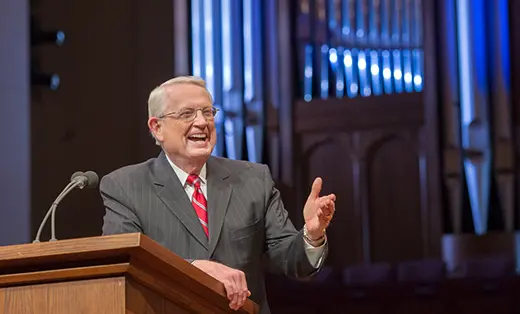Did a Unified Church Develop from Diversity and Conflict?
By Michael J. Svigel
Some modern historians and theologians propose that the early church was characterized by “radical diversity.” They argue that we cannot legitimately speak of a unified “Christianity” during that time, but rather, that the early church consisted of competing “Christianities.” Having denied the reality of the resurrection, these scholars are faced with explaining how Christianity developed a unified confession of faith and a standard body (canon) of sacred Scriptures. These historians believe that the “orthodox” church was the end result of many decades of conflict, and they also believe that the Catholic church even forged documents like Acts and Second Peter in order to paint a false picture of unity and harmony in the early church. Today, works of fiction like The Da Vinci Code and groups like the Jesus Seminar presuppose this view of the early church.
However, if Jesus truly rose from the dead, ascended into heaven, and sent the Holy Spirit just as the earliest eyewitnesses claimed, then the “diversity and conflict” version of early church history could not be correct. The continuing headship of Christ over the worldwide church (Colossians 1:18) and the abiding presence of Christ through the indwelling Spirit (John 14:16, 18) both guarantee that the true church would remain united around the central doctrines of the Christian faith, even in the face of internal and external conflict. Irenaeus—a student of John’s disciple, Polycarp—described the unity of the church near the end of the second century in terms that still reflect the church today:
The Church, though dispersed throughout the whole world, even to the ends of the earth, has received from the apostles and their disciples this faith: [She believes] in one God, the Father Almighty, Maker of heaven, and earth, and the sea, and all things that are in them; and in one Christ Jesus, the Son of God, who became incarnate for our salvation; and in the Holy Spirit, who proclaimed through the prophets the dispensations of God, and the advents, and the birth from a virgin, and the passion, and the resurrection from the dead, and the ascension into heaven in the flesh of the beloved Christ Jesus, our Lord, and His [future] manifestation from heaven in the glory of the Father . . .
As I have already observed, the Church, having received this preaching and this faith, although scattered throughout the whole world, yet, as if occupying but one house, carefully preserves it. . . . For, although the languages of the world are dissimilar, yet the import of the tradition is one and the same. (Irenaeus, Against Heresies 1.10.1, 2)
Modern, liberal scholars attempt to revise the history of the church to reflect their own social and theological agendas. However, believers in the biblical Christian faith summarized in the early confessions can be confident that theirs is the true faith “once for all handed down to the saints” (Jude 3). The presence of Christ through the Holy Spirit is our assurance that even if the church strays into conflict and error, God will preserve and renew it for His glory (Matthew 16:18; 28:20; John 16:13).
Adapted from Charles R. Swindoll, The Way of Truth in a World of Fiction: Beyond the Di Vinci Code workbook (Plano, Tex.: Insight for Living Publishing, 2006): 195-197. Copyright © 2006 Charles R. Swindoll, Inc. All rights reserved worldwide. Used by permission.
About the author
 Michael J. Svigel
Michael J. Svigel
Michael J. Svigel received his master of theology in New Testament and doctor of philosophy in Theological Studies from Dallas Theological Seminary (DTS). He currently serves as associate professor of Theological Studies at DTS, teaching Theology and Church History. Prior to accepting his position at the seminary in 2007, he worked as a writer in the Creative Ministries Department at Insight for Living Ministries. Mike and his wife, Stephanie, are parents of three children.
